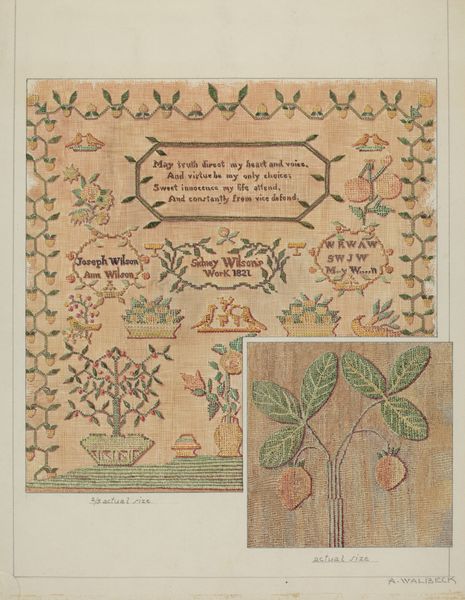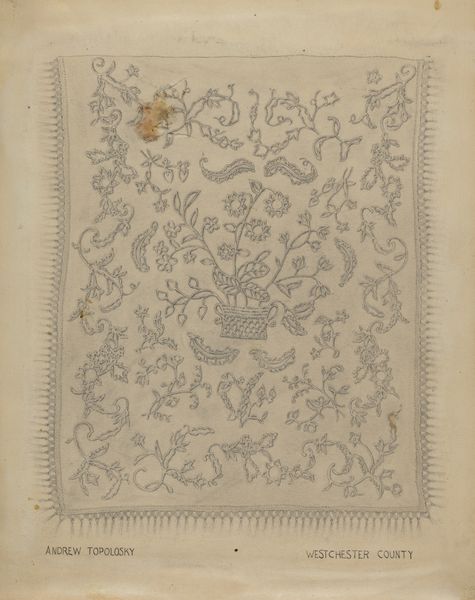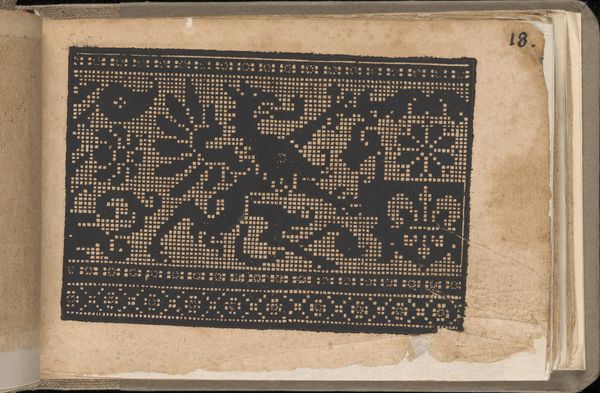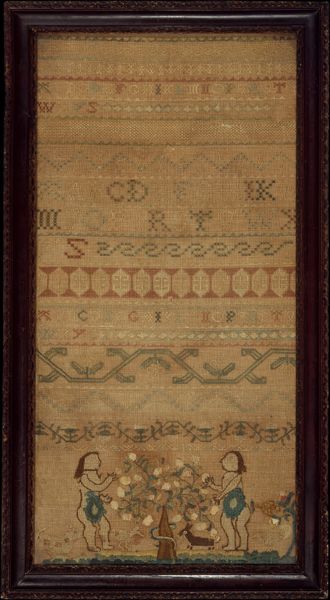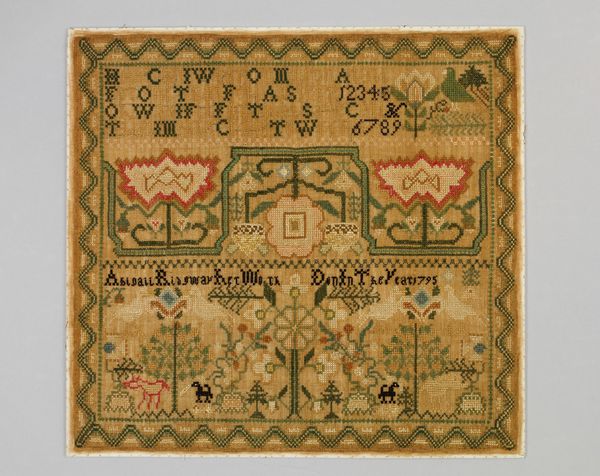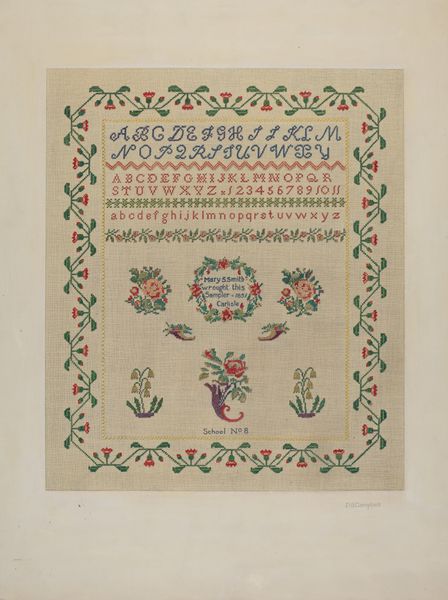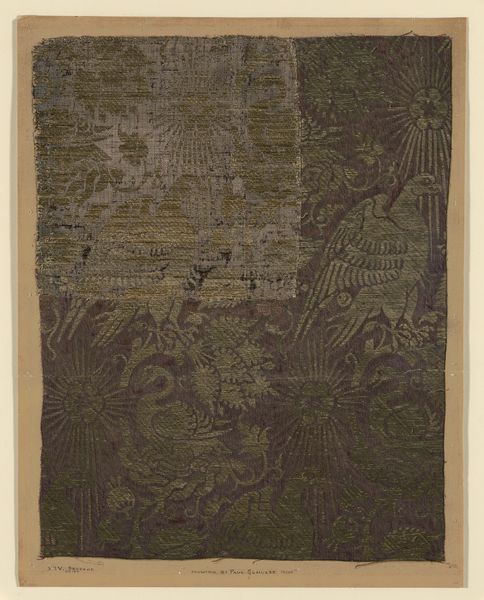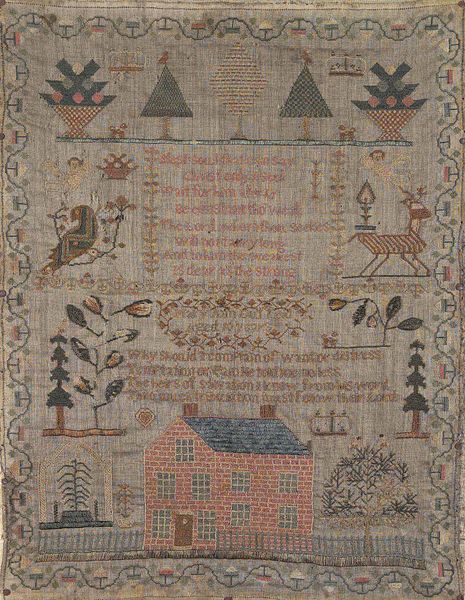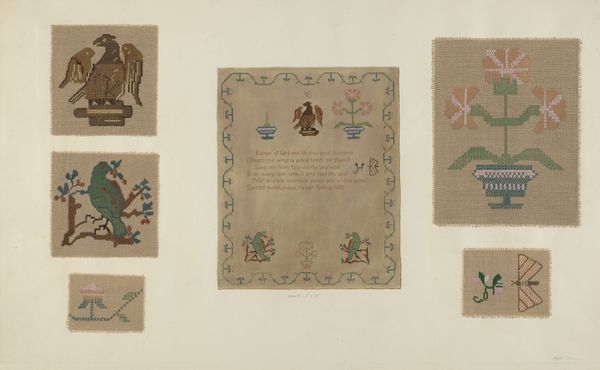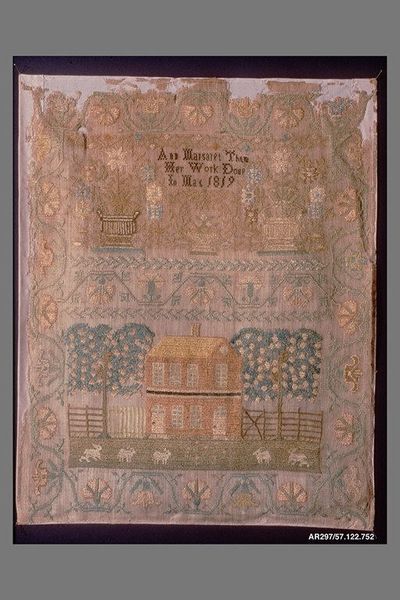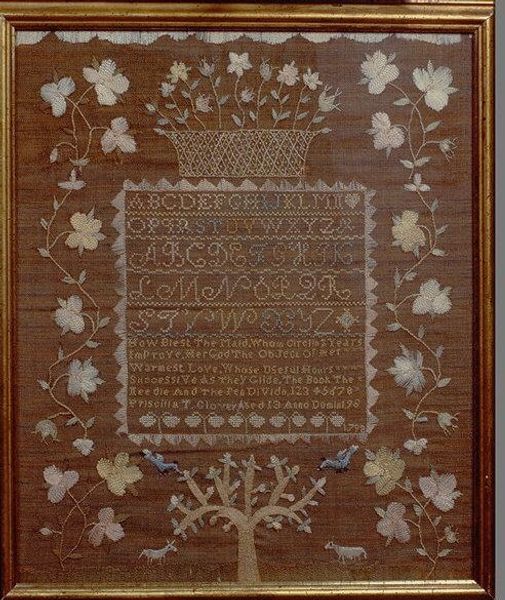
weaving, textile
#
water colours
#
weaving
#
textile
#
text
#
folk-art
#
line
#
decorative-art
Dimensions: 64.7 × 52.4 cm (25 1/2 × 20 5/8 in.)
Copyright: Public Domain
Editor: We're looking at a textile work called "Sampler" made in 1838 by Nancy Vredenburgh. It seems incredibly detailed. What strikes me is the range of images rendered through needlework; verses and animals alongside decorative borders, what can you tell me about this work? Curator: Consider the materials: linen ground, silk threads, the very act of stitching. This isn't simply "decorative art" as some might label it. This sampler represents labor, skill passed down through generations of women. Look at the text – biblical verses about youth and aging, prompting reflection. Editor: So, it’s more than just a display of skill; it is embedded in social context. Curator: Exactly. These samplers were often produced in academies or schools like the Mount Tabor Academy noted in the piece. What was being taught and what was its value for these women in that time and place? We must understand the means of production. Consider who benefits and how the sampler embodies those ideas. Is this about piety? Is this about social position? What is being consumed, literally and figuratively? Editor: So by analyzing the material, and how it’s made, we uncover these layers of social and even economic meanings tied to femininity and education at that time? Curator: Precisely. The medium, weaving and its associated process are just as important to understand as the artist or patron in determining the piece’s lasting effects. Editor: It’s shifted how I see it entirely. It's fascinating how viewing something seemingly simple, like a sampler, through a materialist lens can reveal so much about the past. Curator: It highlights the labor and production inherent in all art. Thinking materially, we understand the complex interplay between creator, object, and society.
Comments
No comments
Be the first to comment and join the conversation on the ultimate creative platform.
